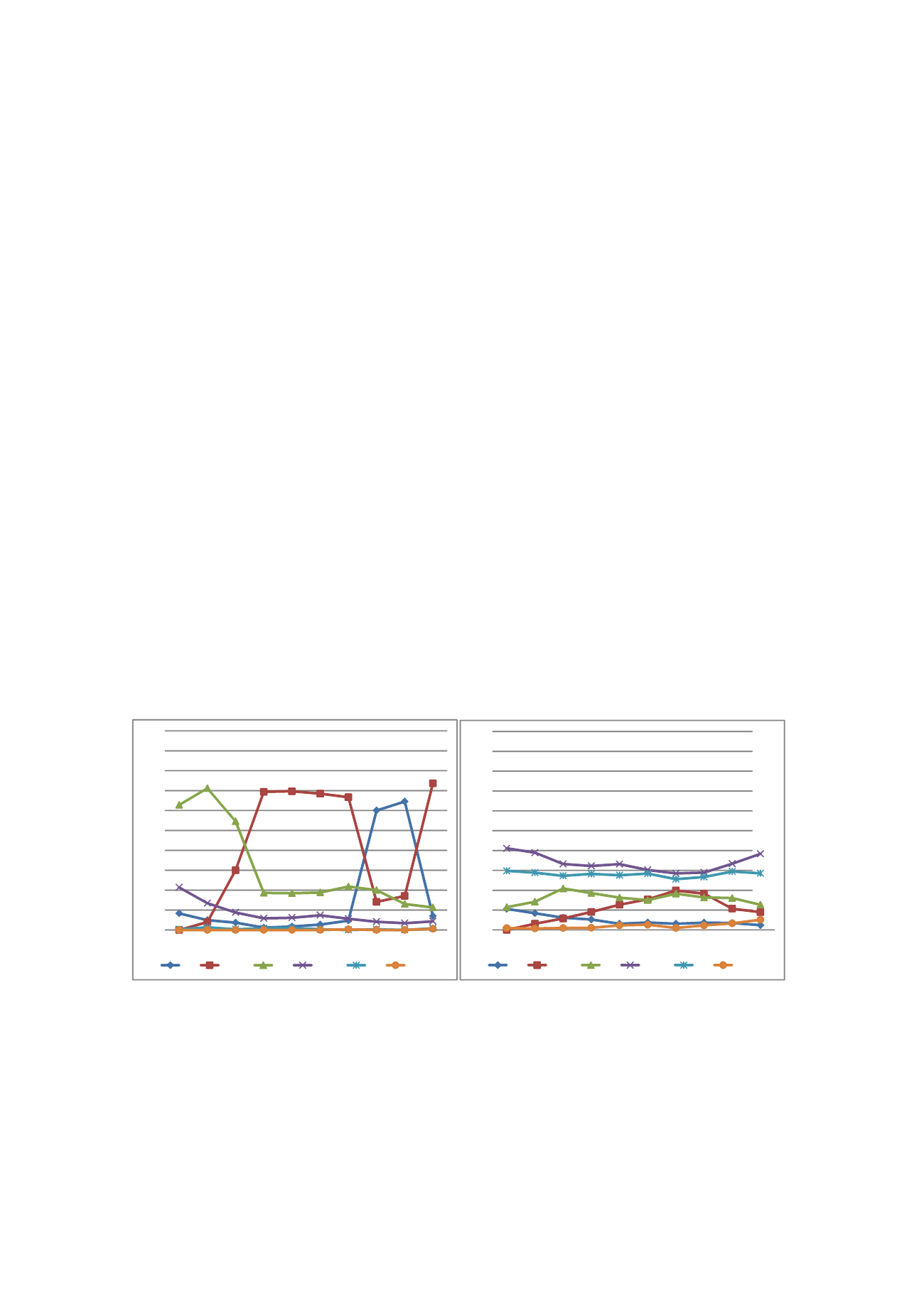
14
retirement at the age of 55, while between 5 to 10 percent only of the cohorts born
1931-1932 did. The most prevalent age of retirement for the non-military employees
across all cohorts is between the ages 61-64; the second most common age of
occupational pension incidence is age 65. For the non-military there is a rather stable
fraction of retirees at age 60, while there is a tendency toward an increase in the fraction
receiving occupational pensions at 56-59 years of age.
In order to provide further graphical evidence of the validity of the reform, we
display the probability of having occupational pensions, of having labor income, and of
being registered as gainfully employed according to the ILO definition, for the cohorts
1938-1939 and 1931-1932 for both military and non-military government employees in
and
respectively. From these figures it is clear that the
Defense Bill affected the fraction that received occupational pensions, thereby also
affecting the age of retirement (measured as the leap in either the take-up rate of
occupational pension or fraction employed) for the military personnel born 1938-1939.
There is no similar discontinuity for the same cohorts among the non-military
government employees. Furthermore, the alternative measures of labor market status tell
the same story.
Figure 1: Retirement age (first year with occupational pension take-up) by birth cohort,
percent (fractions sum to 100 per birth cohort); birth cohorts 1931-1940; military
personnel (left) and other government employees (right)
0
10
20
30
40
50
60
70
80
90
100
1931
1932
1933
1934
1935
1936
1937
1938
1939
1940
55
56-59
60
61-64
65
66-70
0
10
20
30
40
50
60
70
80
90
100
1931
1932
1933
1934
1935
1936
1937
1938
1939
1940
55
56-59
60
61-64
65
66-70


